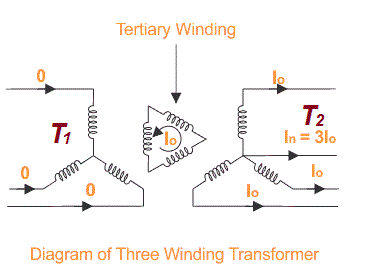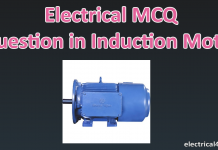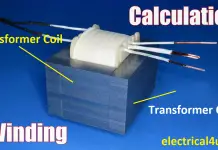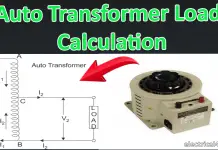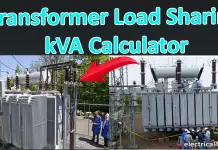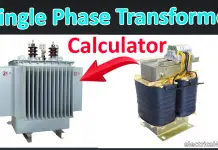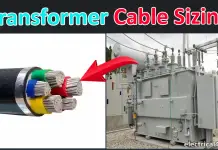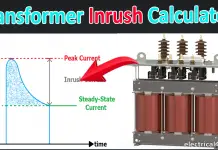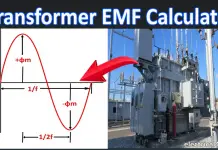Why tertiary winding are used in transformer?
In two winding transformer both primary and secondary is having the same kVA rating. Both windings are independent circuits and these transformers have three or more independent circuits with different transformation ratios, but the kVA rating of the primary and secondary are same. But three winding transformer may consist of three set of winding such as primary, Secondary and tertiary. Three winding transformer may be either 3 phase units or 1 phase units connected in three phase tank circuits. The kVA rating of the three winding transformer may not be equal. They may operate with the different voltage level with different kVA rating. The voltage level may be Low voltage level, Medium voltage and high voltage. In this we are going to discuss about the purpose of a tertiary wind in the transformer.
[wp_ad_camp_1]
- To supply a small load with various voltage level. i.e If I am having one transformer which voltage rating is 11kV/ 2.2 kV. In this, for my local electricity (440 volts) I cannot install another one step down transformer. So that the additional I add another one winding with the same transformer. Here my electricity gets fulfilled. Increase the capacity of the transformer decrease the installation cost.
- Supply phase compensation devices such as capacitors for power factor
- Tertiary winding indicates the voltage in HV testing transformer
- In delta connected, star/star or star/zigzag winding transformer the tertiary winding reduces the zero sequence impedance. And the tertiary winding allows enough earth fault current to flow for the operation of the protecting devices in order to reduce voltage imbalance.
[wp_ad_camp_1]
Note: Tertiary winding is called as auxiliary winding, because of it is Supplying required voltage to the small load current circuits.

